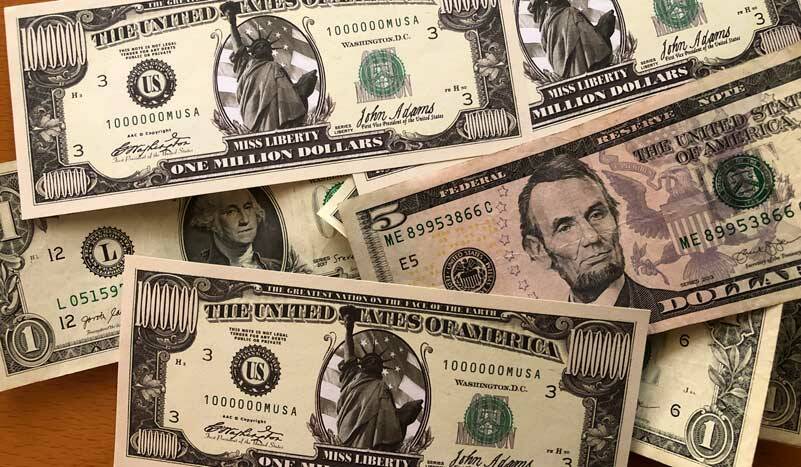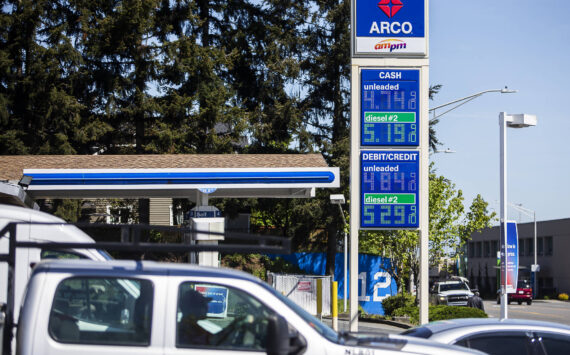By Morf Morford, Tacoma Daily Index
I don’t know about anyone else, but my email and social media news feeds are dense with shrill warnings about the oncoming/inevitable recession. Some, with clear agendas (or products) to promote, warn that this recession will be “the big one”.
The irony is that I have heard this all before. In fact I’ve been hearing it non-stop since about 2009.
They exclaim that the dollar, the stock market, gold and even cash are all about to implode in value taking everything from real estate prices to pension funds with them.
What made the Great Recession so great?
What many of us know as the Great Recession (2007-2009) was the longest and deepest economic downturn in many countries, including the United States, since the Great Depression (1929–1939).
An economic recession is a sustained decline (usually three consecutive quarters) and then a slow regaining of lost economic ground (or in the case of the “recovery” of 2009-2012, agonizingly slow). In other words, an economy in recession is an economy in motion – whether positive or negative.
An economy in a full depression is stagnant. It might be on economic life-support, but it’s not going anywhere – either positive or negative. We can only hope that we never experience such a thing. And we can only hope that our politicians and policy makers avert any movement in that direction.
The Great Recession was, to use the jargon of economists, the result of “severe contraction of liquidity in global financial markets” which began in late 2007 thanks to the bursting of the U.S. housing bubble that had been years in the making.
The Great Recession could have been easily averted – but there was too much money to be made. For some. And, as we found out too late, much to be lost.
Sub-prime
In yet more examples of economic jargon, “sub-prime” (meaning less-than-prime) and adjustable-rate mortgages (ARMs) became the way realtors, lenders and home-buyers talked about real estate.
As always it seems, the more abstruse and convoluted the vocabulary was, the more disconnected from reality the real estate market became. Or maybe the market became unhinged and the jargon followed suit. Either way, it became obvious to almost all of us that we were headed for an inevitable economic reckoning.
And then the obvious happened. Home owners borrowed against the increased (and often artificially enhanced) value of their homes or sold their homes at an unimaginable profit.
Many borrowers, thanks to fluctuating interest rates and home values, with outstanding loans both prime and subprime, found themselves “underwater,” meaning that they owed more on their mortgage loans than their homes were worth.
As the number of foreclosures increased, even in desirable neighborhoods, banks ceased lending to subprime customers, which further reduced demand and prices.
Homes across America stood empty – sometimes for years.
Toxic assets
From 2001, successive decreases in the prime rate (the interest rate that banks charge their “prime,” or low-risk, customers) had enabled banks to issue mortgage loans at lower (and usually “adjustable”) interest rates to millions of customers who normally would not have qualified for them.
Hedge funds (among others) held these assets that quickly added to our economic vocabulary terms like “toxic assets”.
And, as the subprime mortgage market collapsed, many banks found themselves in serious, often terminal, trouble.
Banks, like many home-owners, had inflated their net worth based on aspirational, or even purely fictional, appraisals. Almost 500 banks across the USA closed and we saw the biggest single financial collapse in US history in the form of Seattle based Washington Mutual.
Taking it to the bank
If you are so inclined, you can see the list (and {negative} assets) of the seven largest bank failures in US history here. Be forewarned; the second, third and fourth largest bank failures in our history have been in the first half of 2023.
The Great Recession was not limited to banks and real estate – General Motors and Chrysler declared bankruptcy in 2009 and were forced to accept partial government ownership through bailout programs.
And as millions of people lost their homes, jobs, and savings, the poverty rate in the United States increased, from 12.5 percent in 2007 to more than 15 percent in 2010. About one quarter of households lost at least 75 percent of their net worth, and more than half lost at least 25 percent.
And, as you might imagine, the recession hit some harder than others – the Great Recession worsened inequality of wealth in the United States. Homelessness on a scale few of us ever would have imagined, become an inescapable feature of life in virtually every America city, and several foreign cites as well, as the contagion of “toxic assets” made their way across banking systems and economies around the world.
Here and abroad, lower fertility rates, historically high levels of student debt, and diminished job prospects among young adults lingered for many years.
In short, recessions are destabilizing and disruptive and take years to recover from.
The dire warnings of economic forecasters may or may not be over-reactions to memories of the damage the last time around. Only time will tell if we are headed for a recession, “great” or small, or in fact, the ultimate “big one”.





